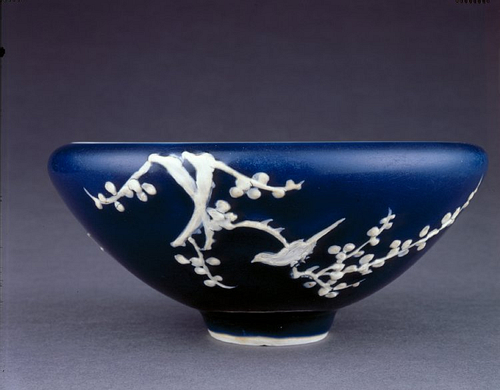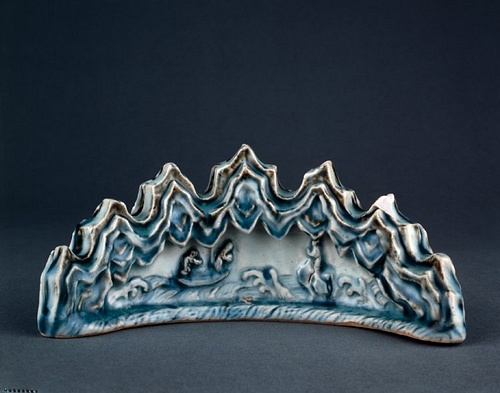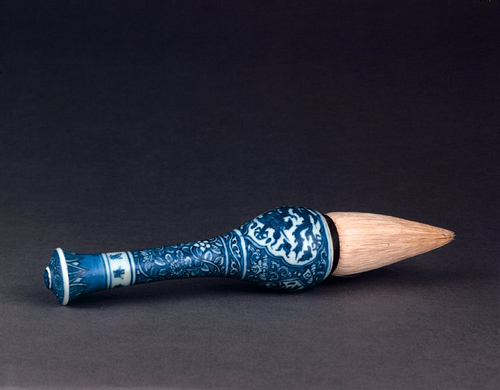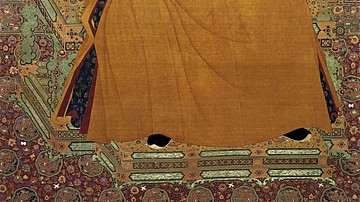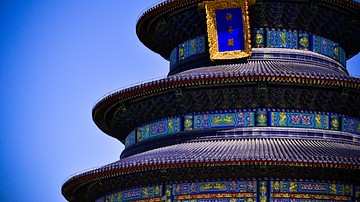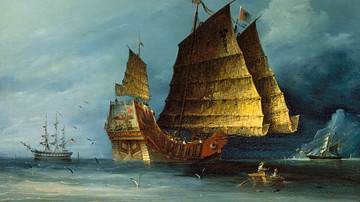
The porcelain of the Ming Dynasty of China (1368-1644 CE) benefitted, as did other arts, from the economic success of the 15th century CE, in particular, and the consequent surge in demand for quality handcraft production both at home and abroad. The Ming dynasty is rightly famous for its fine ceramics and especially the cobalt blue-and-white porcelain produced in such towns as Jingdezhen in Jiangxi province. Still highly prized by collectors today, Ming Porcelain would have a major influence on the ceramics of many other countries from Japan to Britain.
Evolution & Developments
Porcelain is only one of many different types of pottery but it is usually valued more than others because of the smoothness of its surface, its pure whiteness, and its translucent quality. Using a particular mix of clay and minerals and firing it at very high temperatures (1280-1400 ºC), porcelain had first been produced centuries earlier, but during the Ming, it was developed to new heights of perfection. The first driver of this evolution was the growth in home demand as ceramics, along with other crafts such as jade carving and lacquerware, finally began to rival painting and calligraphy as the most highly-prized of all the Chinese arts. As economic prosperity grew under the Ming, so the rich sought to express their new status not only by showing off art objects but also displaying a deep knowledge of it. Thus, connoisseurship developed and, consequently, the social status of fine artists also rose.
Jingdezhen (Chingtechen) has grabbed the headlines as the great centre of Ming porcelain but there were other pottery towns producing high-quality wares, notably Dehua and Foshan. Jingdezhen was the first such centre, though, and, thanks to rich local clay deposits, its production of pottery goes back to the Han Dynasty (206 BCE - 202 CE). The town produced pottery vessels for the emperors of the Tang Dynasty (618-907 CE), and by the time of the Ming, it had become one of the great industrial centres of China and probably one of the earliest in the world to reach such a scale of production. The imperial court was a major customer, regularly making huge orders of porcelain from this remote southern town.
In the first period of Ming rule blue-and-white porcelain was the most highly prized, as it had been under the Mongol rulers of the Yuan Dynasty (1215-1368 CE). The blue (cobalt oxide sourced from central Asia, particularly Iran) was painted onto the porcelain body and then covered with a glaze called Yingqing. An alternative but less common colour was red and orange, achieved by using copper instead of cobalt. Early designs were often influenced by the high demand from Arab clients who wanted the decoration on the porcelain to mimic the intricate abstract floral designs of their own textiles and carpets. From the 15th century CE, decoration became more restrained and delicate, with birds and flowers - subjects and styles popular in landscape painting - being particularly common but with much more of the porcelain left white. Indeed, Ming porcelain from Dehua was noted for its pure white wares.
As the Ming dynasty wore on, porcelain decoration became much more elaborate, again perhaps in response to foreign demand, especially in Japan and Europe. Porcelain became a major export, along with such goods as silk and lacquerware, and was exchanged, in particular, for Spanish silver which came from the Americas via Manila. The designs by the 16th century CE, then, included multi-coloured scenes using red, blue, yellow, and greens, often with human figures in intricate robes.
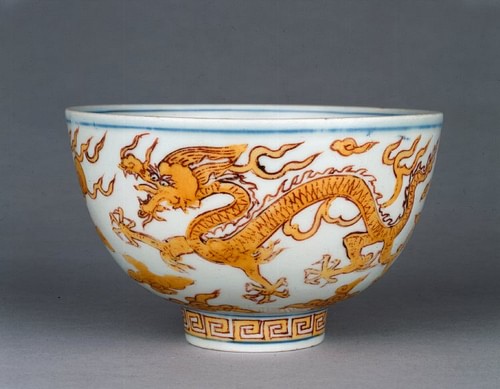
Jingdezhen, in particular, would outlast the Ming dynasty itself as a world producer of ceramics, so much so that by the 18th century CE the town came to boast 100,000 workers and the perfection of techniques had become so specialised that a single porcelain item might go through the hands of 70 workers before it was deemed finished. Still, the general quality of production went down as the quantities went up, and even the cobalt needed for the distinctive blue decoration became scarce following a decline in trade with central Asia for political reasons.
There was another downside to all this industrial activity as Jingdezhen became infamous as the 'town of year-round thunder and lightning' (Dawson, 228) with its countless kilns spouting non-stop fire and smoke into the skies. Such was the fame and dominance of Chinese porcelain in the world ceramics market that all fine, bone-hard, and white porcelain wares were often simply called 'China'. As these fine wares combined beauty and the allure of their mysterious production - it was only in the 18th century CE that the secrets of porcelain manufacture were learnt in Europe - there even developed a collectorship of them in the West, and many of these collections have since been passed on to museums worldwide. Occasionally, exceptional pieces turn up at prestigious auction houses, such as the tall Ming vase sold at Sotheby's Hong Kong in 2011 CE for a cool $21.6 million.
Shapes
Porcelain could take just about any form besides the traditional vases (from small flower vases to large wine vessels), jars, cups (with or without stems and handles), shallow bowls, and plates long seen in Chinese ceramics. There were flasks (including the distinctive flattish and circular 'moon flasks'), wine-ewers which look like teapots, lamps, brush rests - often in the form of a mountain range, brush holders, ink stones, lidded boxes of all shapes and sizes, incense burners, tiles, ceramic pillows, and even bird feeders. Elegant curves, clean lines, and narrow necks are common features of vases, in particular.
Decorative Designs
Popular subjects for decoration included stylised flowers, grapes, waves, lotus scrolls, vine scrolls, reeds, fruit sprays, and other motifs commonly used in paintings and textiles. These motifs are usually restricted to the borders of wares. Scenes with fish or birds, including songbirds and herons but also seemingly less elegant ones like geese and chickens (particularly common on small wine cups), were prevalent. Landscapes were another subject matter borrowed from painting. Mythical creatures were popular, especially the dragon, symbolic of good fortune in Chinese culture. Another popular theme was the combination of pines, plum trees, and bamboo, known as the 'Three Friends of the Cold Season'. As the Ming Dynasty progressed, ceramic artists favoured a greater naturalism in their designs.
One particular type of decoration was cloisonné, that is to 'paint' the entire glazed object in brightly coloured enamel paste set between very fine bands of metal. Fired again and then polished, the vessel was given a bright jewel-like sheen. Indeed, some examples from royal tombs actually have semi-precious stones set in them. The cloisonné wares would continue to be very popular in the subsequent Qing Dynasty (1636-1912 CE) and much imitated in Europe. During the Ming Dynasty, cloisonné pieces were generally reserved for the imperial court and temples since the scholarly class considered them rather too garish to adorn their own homes.
Not strictly speaking part of the decoration but, nevertheless, an important development in Chinese ceramics was the habit of adding Ming imperial reign dates to wares, something not at all common in the ceramics of previous Chinese dynasties. By the 16th century CE, it was becoming common for artists to sign their ceramics, too, something which could greatly affect their price; such was the reputation of some artists.

As mentioned, there was an influence of foreign art on Ming decoration such as the floral patterns of Persian and Arab peoples and the highly stylised flowers of Tibetan art. Often pieces also carried inscriptions in Persian, Arabic and Tibetan, illustrating the wide geographical distribution of the Ming porcelain market. Despite this external influence on some wares, it is also true that the traditional Chinese shapes and decorations used in many Ming porcelains greatly influenced foreign potters in such places as Japan, Southeast Asia, Turkey, Iran and eventually, Europe.
